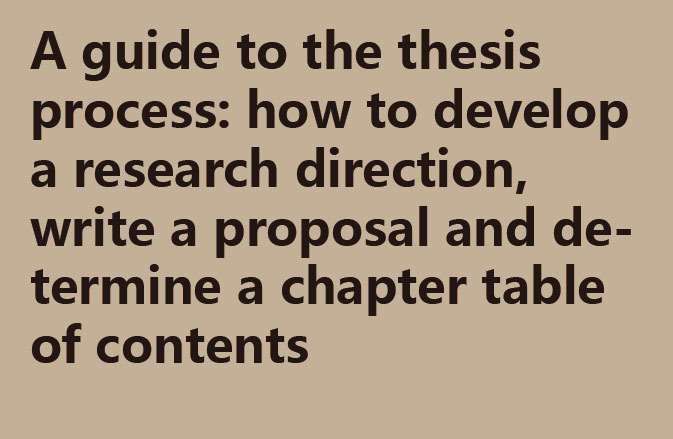I. Introduction
The purpose of this paper is to provide faculty members with an easy-to-understand guide to walk students through the thesis process so that they can face the thesis writing task with greater confidence. The guide follows five areas: developing a clear research direction, writing the proposal, determining the chapter table of contents, final layout and editing, and considerations.
II. Formulation of Research Direction
At an early stage, one needs to meticulously read the relevant information posted on the school’s official website or Blackboard to understand the specific requirements of the thesis. This includes all the details of the thesis, such as grading standards, thesis requirements and repetition rate. At the same time, you should start the preparation work as early as possible to avoid rushing to deal with it in the last month. It is recommended to start the preparation at least six months in advance.
Writing the proposal
After determining the direction of the research, you should start writing the proposal. The proposal should contain elements such as the content of the research, the purpose of the research, and the research methodology. It can be revised according to the opinions of your supervisor after discussion with him/her.
IV. Determine the chapter catalogue
After the proposal has been approved, work should begin on the chapters. In this process, time should be reasonably planned and discussed in regular meetings with the tutor.
V. Final typesetting and editing
After completing the first draft, it should be proofread and edited several times. This part of the process is crucial, and you need to double-check the errors in the thesis to ensure that it is clearly structured and logically sound.
Notes
1. Allow enough time for proofreading. It is recommended that a 10,000-word thesis be reviewed in one week’s time, with half an hour spent each day.
2. When writing the draft, you should sort out the manuscripts and clearly mark the title of each draft.
3. when reading the literature, new ideas should be recorded in a timely manner and avoid recording only key words, but should be described in more detail.
VII. Conclusion
This is a brief overview of the thesis process. We hope this guide can help students better understand the whole process of thesis writing, improve the quality of the thesis, and successfully complete their studies.




